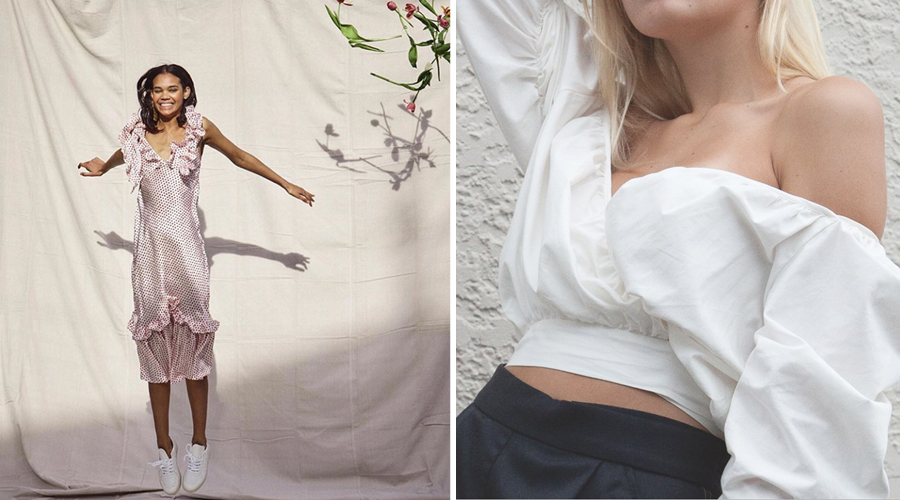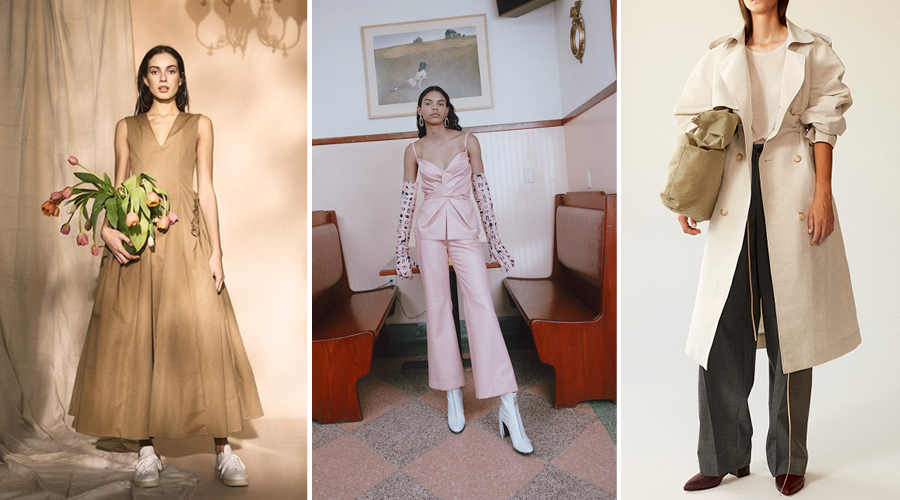It’s officially Fashion Revolution Week. A time to pause for thought on how we consume, wear and dispose of our clothes, this week offers an opportunity to take a stark look at how fashion truly impacts the environment. Hint: it’s much more than you think.
The fashion industry is the second largest polluter in the world — after oil. Let that sink in. Untreated toxic waste-waters get dumped from factories into waterways and huge amounts of fresh water is wasted for producing fabrics like cotton — the ratio currently sits at around 20,000 litres of water to 1kg of cotton. Not only that but microfibres from fabrics (minute, plastic-based particles from synthetic textiles that shed when washed) often end up in the ocean and have become a major polluting factor, ending up consumed by the fish we eat and one of the reasons why humans are ingesting more plastic in their diets than ever before. If all this wasn’t enough, synthetic textiles like polyester can take up to 200 years to decompose, meaning that most of the clothes we throw out (around 72% of the average wardrobe is made from synthetic materials) become landfill fodder and are ultimately hugely detrimental to the environment.
Fashion also contributes significantly to harmful greenhouse gas emissions (10% of global output) – a major byproduct of its manufacturing and transportation of garments. What’s more, synthetic fibres are made from fossil fuels and require far greater energy input to create than natural fibres. These cheaper fibres also emit N20, which is apparently three-times more damaging than CO2.
In light of the damning statistics, we thought we’d cut through the noise to bring you a simple guide on a few things you can do to affect your fashion consumption.
1.Educate yourself
This means on the issues at play but also on the brands you should be turning towards. In reaction to the growing concern with how fashion affects the environment, a number of brands (both well-established and new) have put sustainability at the forefront, answering the question of whether to choose a piece that is beautiful OR good for the environment by saying, well why not both? Some of our favourite brands championing the cause include Maggie Marilyn, Rachel Mills, Stella McCartney, BITE, Chief Studio, Edun, Allbirds, Paris Georgia, KITX, Maison Cleo, KOWTOW, Marine Serre, Elliss, and E.L.V Denim. Although there are many more.
Some of the certifications to be aware of include Bluesign, Eco-Cert, Global Organic Textile Standard, Oeko-Tex, Cradle 2 Cradle, the Fairtrade mark and the Global Recycle Standard.
Good online resources for more information on the environmental effects of fashion can be found on websites such as Fashion Revolution, and Sustain Your Style.

2. Buy higher quality or second hand
It’s pretty simple really. A beautiful piece bought from a brand putting high-quality craftsmanship at the centre of its designs will last significantly longer than a trendy, seasonal one. Yes, the temptation to buy clothes in bulk from fast-fashion retailers is there. But if you take a good hard look at what you actually need and save up to spend slightly more on one or two pieces (as opposed to five or six), you’re not only consuming less, you’re consuming smarter.
The other side of this, is the burgeoning market for second-hand fashion, seeing online consignment stores like The Real Real and Vestiaire Collective grow exponentially over the last few years (The Real Real has even opened physical stores in LA and New York). Making second-hand purchases feel as luxurious and exciting as buying off the rack, these businesses are helping the industry adopt a more closed-loop cycle.
3. Explore other ways of getting rid of old clothes
Instead of throwing out clothes you’ve tired of, try selling them on or donating them to places where you know the pieces will actually reach those in need. The City Mission in Auckland is a great place to donate unwanted clothes (especially warm ones ahead of winter) while other local initiatives like Koha Apparel are establishing more direct links between those who have clothes to give away and those who need them.
Another way to make use of clothing that is unwanted is to rent it out. That dress you bought for a ball once could be rented out to others who need something specific, thus giving the piece more worth per wear.
4. Get behind causes
Donating time and money to causes is an obvious way of affecting change. Fashion Revolution established itself as a platform for spreading awareness about the detrimental effects of fashion via its viral hashtag #whomademyclothes. On its website, it lists a number of things we can do as consumers to get behind the cause including letter templates that can be sent to policymakers and brands, donation options and educational resources.
Here are some causes to get know about and get behind: The World Fair Trade Organisation, Clean Clothes Campaign, the Centre for Sustainable Fashion, the Ellen MacArthur Foundation, the Fair Trade Federation, the Ethical Trade Initiative, the Fair Wear Foundation, Fairtrade International, Textile Exchange, Labour Behind The Label, Traid, and Tearfund.







